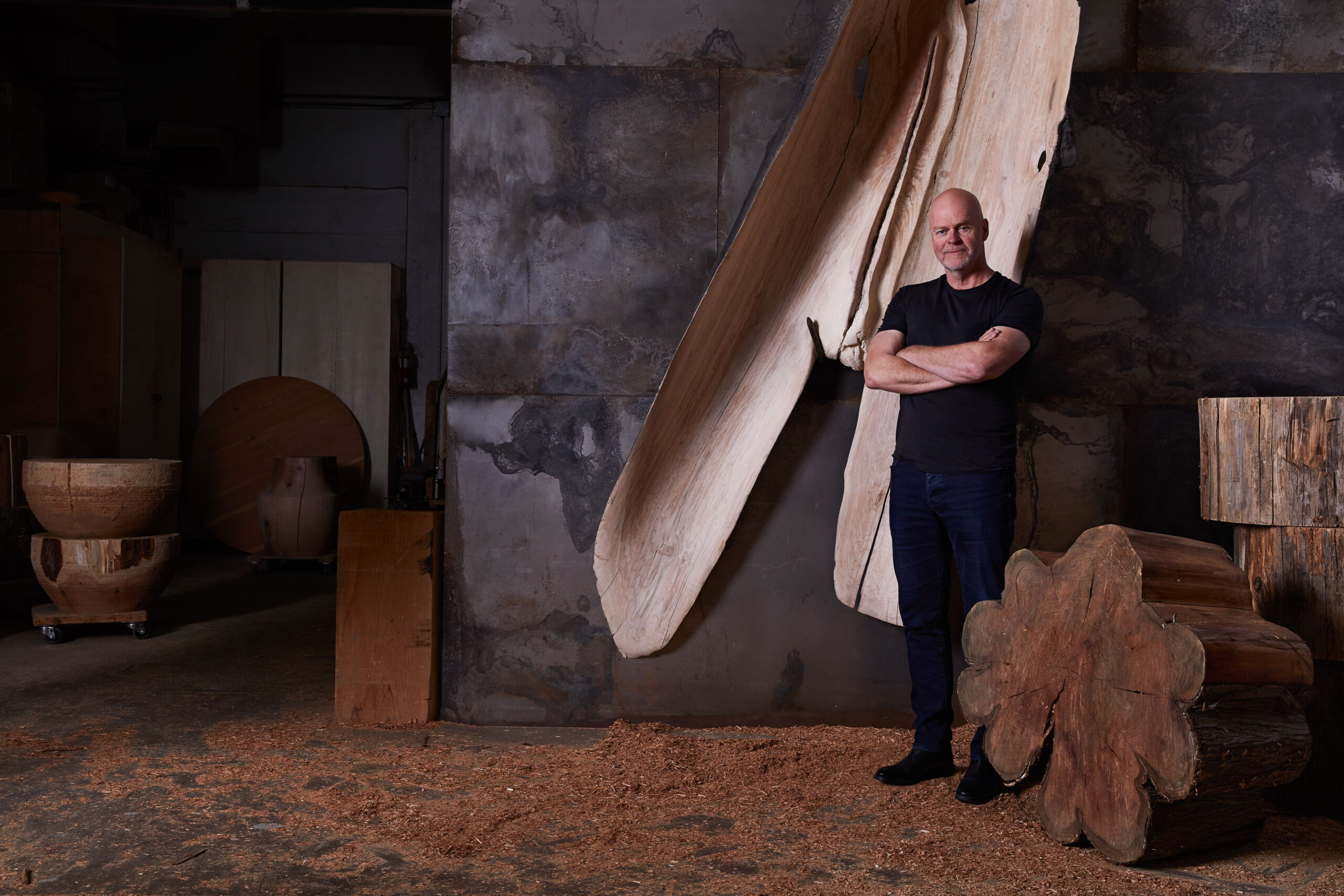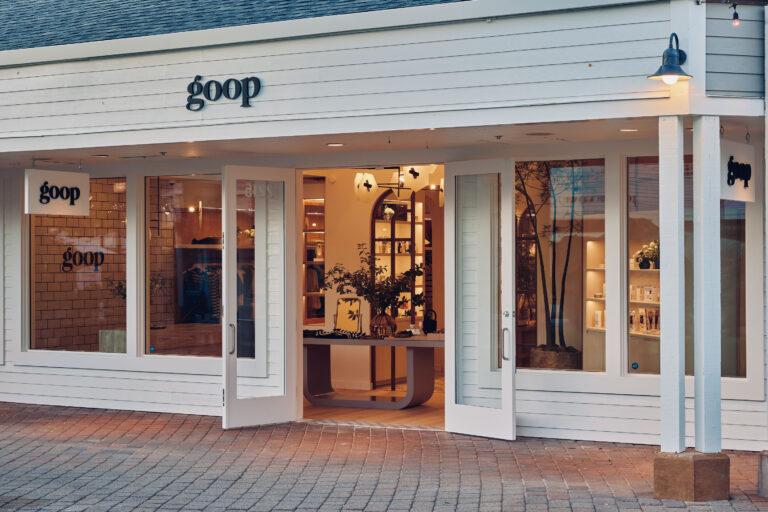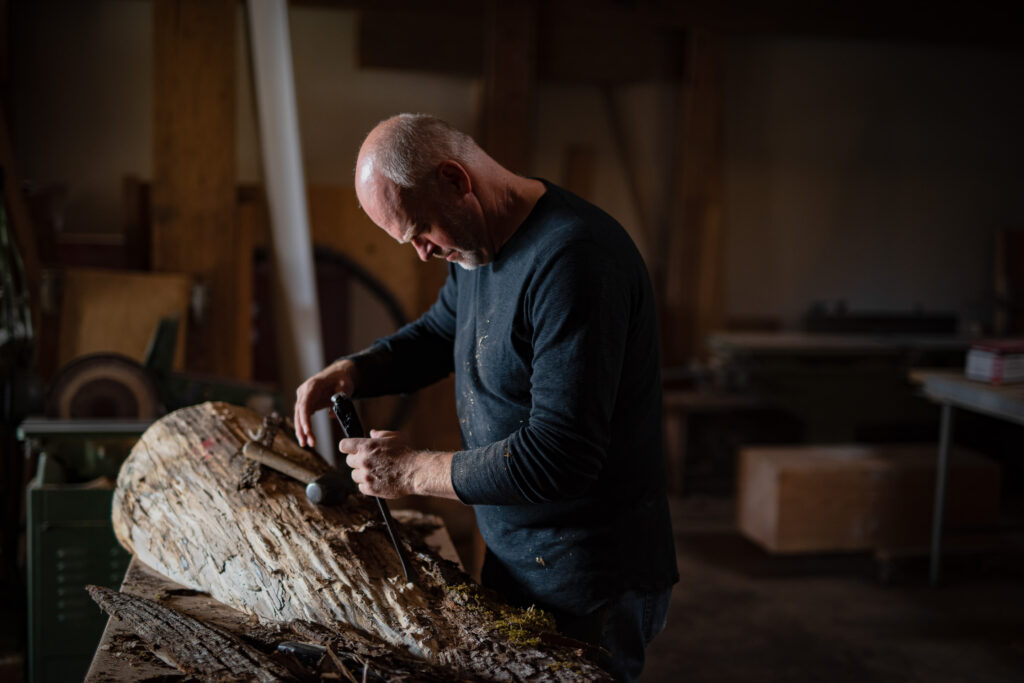
At the Crossroads of Art and Design, Brent Comber Takes Inspiration From the Beauty of the Pacific Northwest to Create Meaningful and Poetic Pieces
Brent Comber’s creative journey started about 30 years ago when he decided to design and build gardens.
“The designs were generally Pacific Rim-influenced,” he remembers. “By that I mean Japanese philosophies centered on balance and harmony plus incorporating plants and grasses of Northern California that are more drought tolerant.”
But it didn’t stop there.
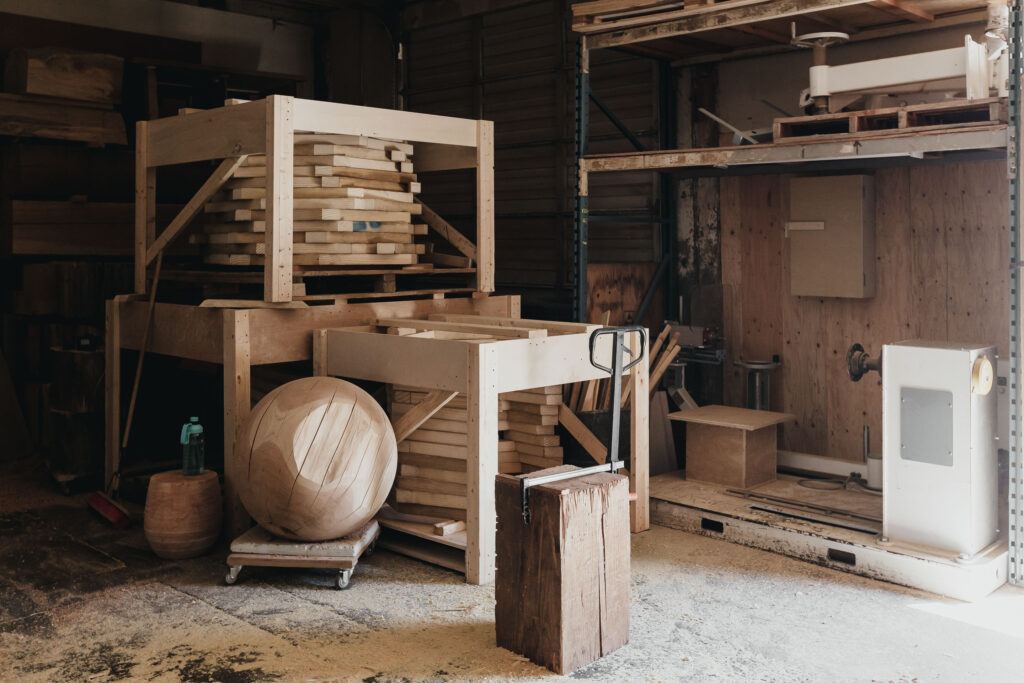
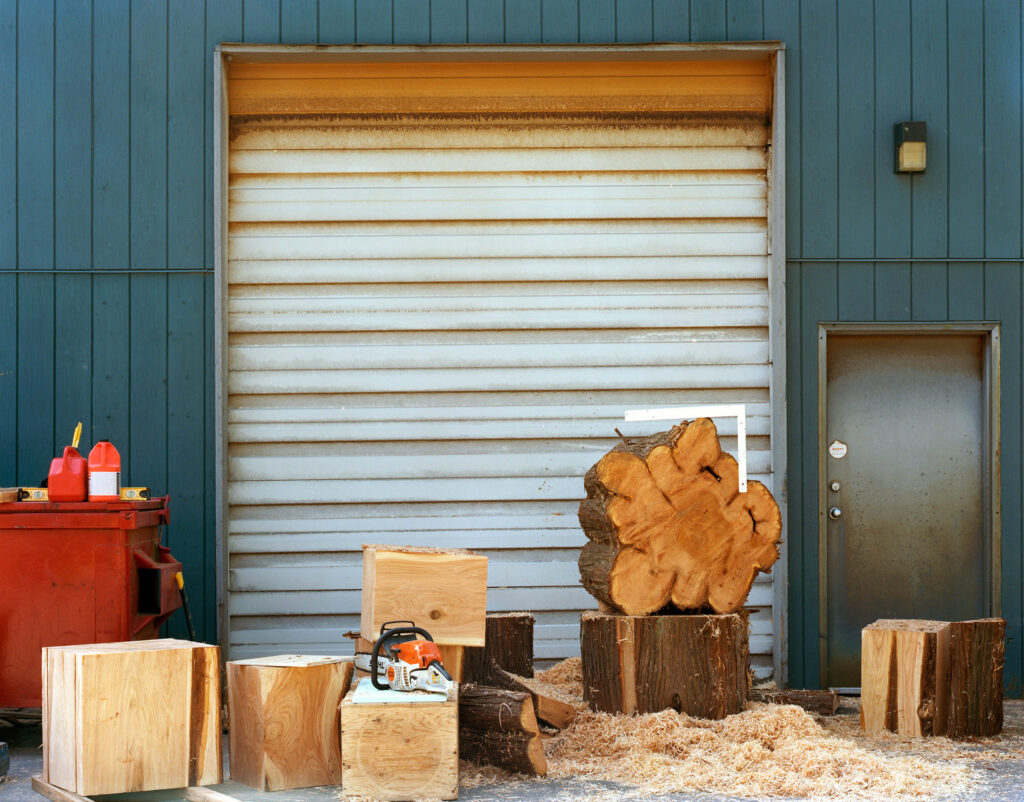
“At the time there were no furnishings available that I felt were sensitive to these designs, so I began carving benches from timber recovered from old buildings being dismantled in Vancouver, Canada.”
Loving this experience, Brent Comber then shifted from garden making to art and design. Currently based in North Vancouver, British Columbia, he is currently at the helm of his studio Brent Comber Originals, which is nestled in an oceanside industrial area, where he creates and innovates in a building that was originally a wood structure once employed by boat builders.
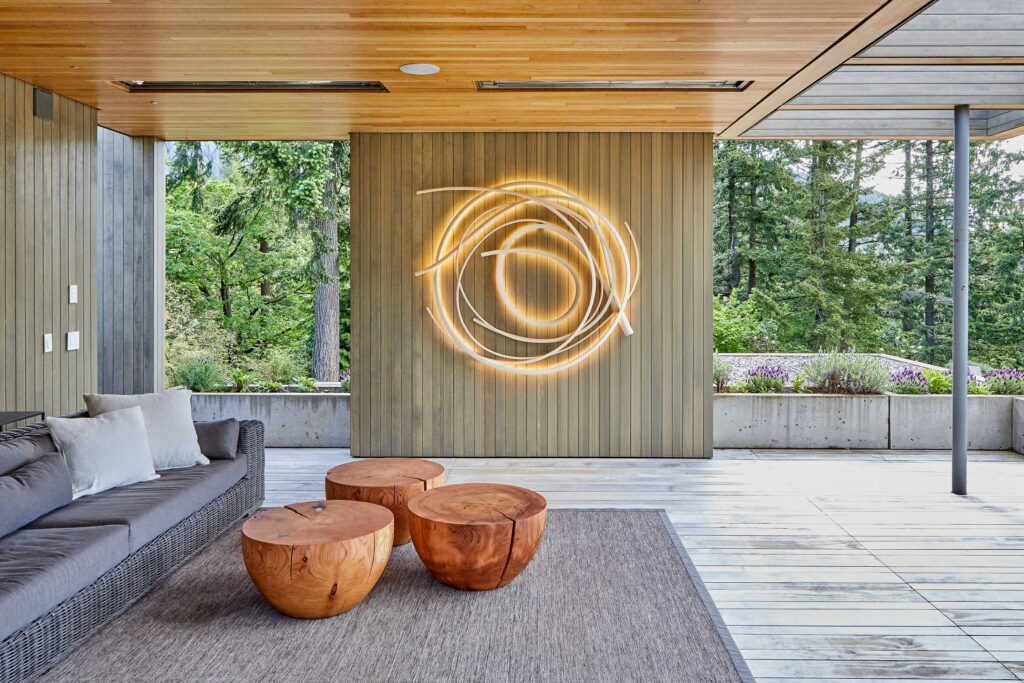
“I’ve always liked being near the water, smelling the ocean and hearing seagulls,” he confesses.
Inspired by the unparalleled surrounding panorama, he transforms day after day—with the help of his team—ideas into three-dimensional artworks, installations and furniture.
Respectful of the materials he uses, Brent Comber bases his work on thoughtful practices and places the environment at the heart of everything.
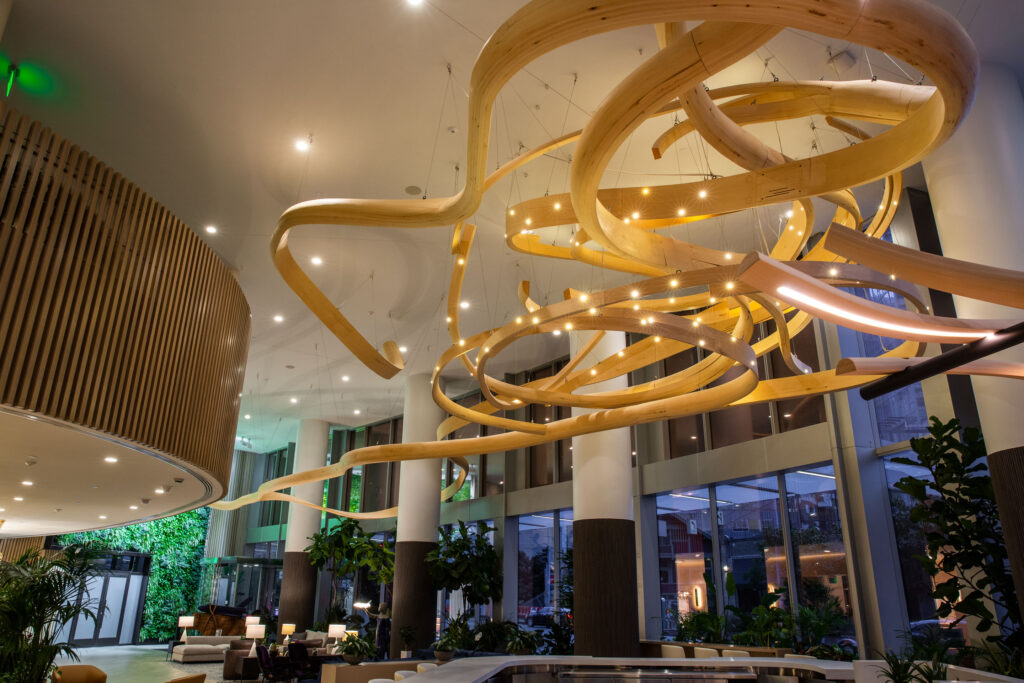
“For example, our sawdust and other wood waste is collected and used by other artists,” he says. “The remaining wood shavings are transported to a facility that superheats the green waste and converts it into compost for the landscape industry.”
Fascinated by unprocessed wood, Brent Comber particularly likes the “cracks, bark sinews, knots, and swirling or uneven grain patterns,” as he describes. “Indigenous wood talks about climate and place. We use primarily offcuts or pieces of wood that secondary industries don’t use in the usual manufacturing process.”

For his latest project aptly named “Connection”—which was commissioned by CHIL Interior Design based in Vancouver, for the ground lobby of high-end residential tower REN in Seattle—Brent Comber opted for yellow cedar.
“It was chosen for being a neutral-toned, fine-grained wood that is locally sourced and very cooperative to bend and twist into our desired forms,” he says.
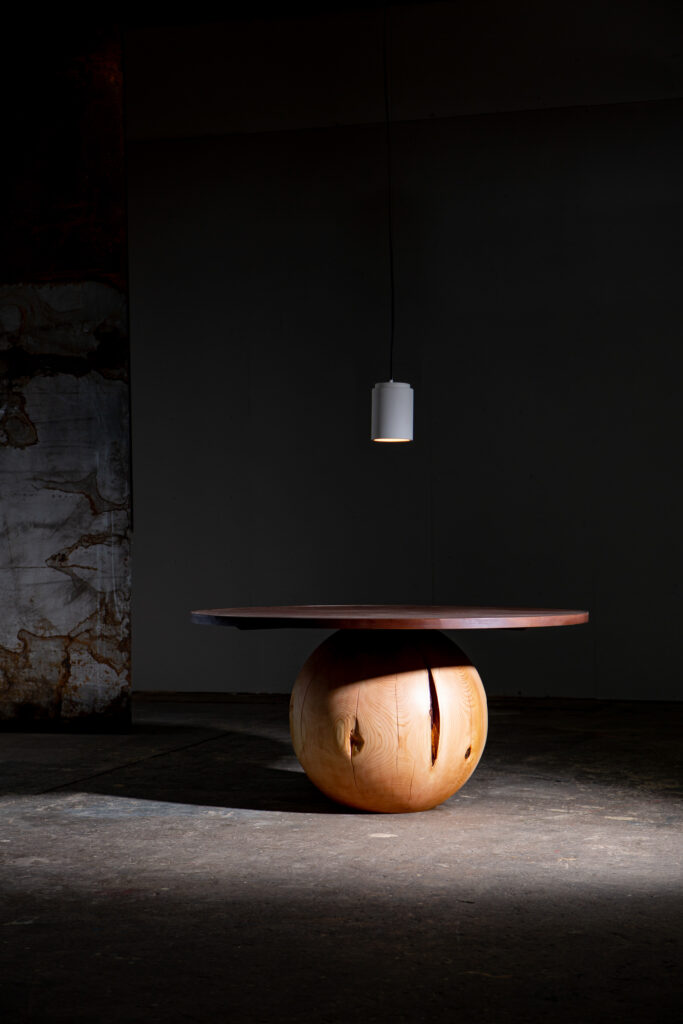

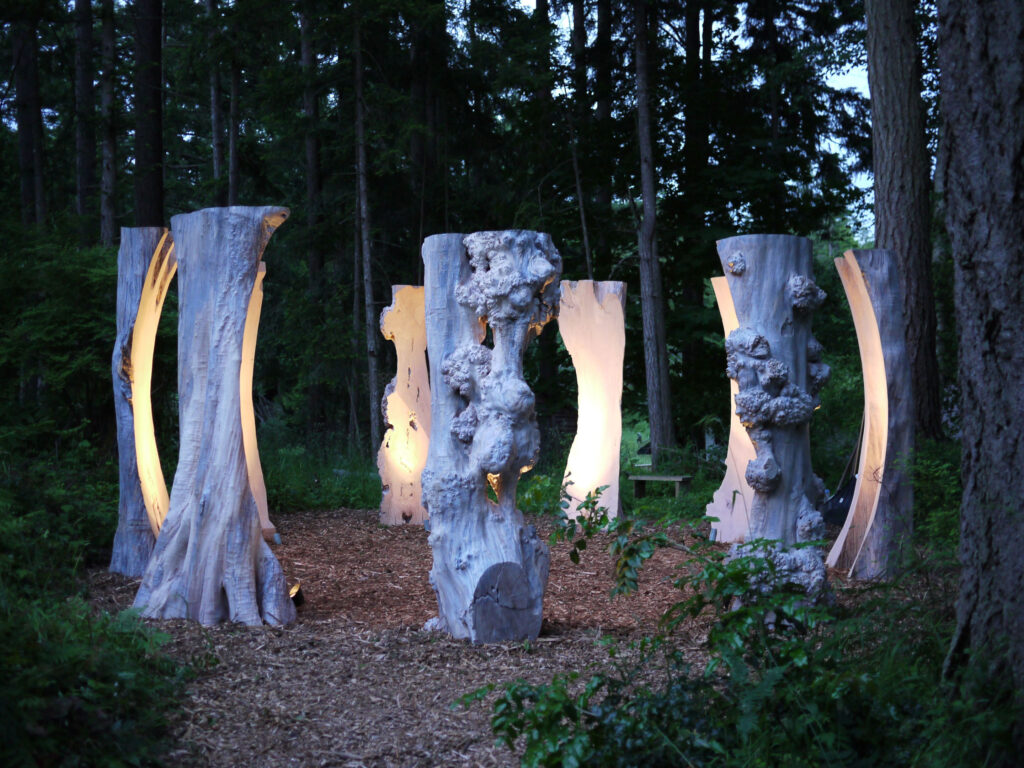
The concept of the large sculpture is derived from the practical application of spruce root cording prior to the roots being employed in lashing poles or making baskets.
“The idea of lashing or connecting was my hope of bringing people together or perhaps people looking inward and feeling they are connected to something larger than themselves,” says Brent Comber. “I like to take what nature provides us in a natural form and to utilize her gift in a way that could be employed in an artistic and meaningful way.”
Brent Comber | brentcomber.com
Photography Courtesy of Brent Comber Originals
